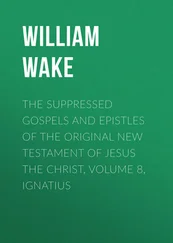Ignatius Donnelly - Antediluvian world
Здесь есть возможность читать онлайн «Ignatius Donnelly - Antediluvian world» весь текст электронной книги совершенно бесплатно (целиком полную версию без сокращений). В некоторых случаях можно слушать аудио, скачать через торрент в формате fb2 и присутствует краткое содержание. Жанр: Старинная литература, на русском языке. Описание произведения, (предисловие) а так же отзывы посетителей доступны на портале библиотеки ЛибКат.
- Название:Antediluvian world
- Автор:
- Жанр:
- Год:неизвестен
- ISBN:нет данных
- Рейтинг книги:5 / 5. Голосов: 1
-
Избранное:Добавить в избранное
- Отзывы:
-
Ваша оценка:
- 100
- 1
- 2
- 3
- 4
- 5
Antediluvian world: краткое содержание, описание и аннотация
Предлагаем к чтению аннотацию, описание, краткое содержание или предисловие (зависит от того, что написал сам автор книги «Antediluvian world»). Если вы не нашли необходимую информацию о книге — напишите в комментариях, мы постараемся отыскать её.
Antediluvian world — читать онлайн бесплатно полную книгу (весь текст) целиком
Ниже представлен текст книги, разбитый по страницам. Система сохранения места последней прочитанной страницы, позволяет с удобством читать онлайн бесплатно книгу «Antediluvian world», без необходимости каждый раз заново искать на чём Вы остановились. Поставьте закладку, и сможете в любой момент перейти на страницу, на которой закончили чтение.
Интервал:
Закладка:
nothing will be restrained from them which they have imagined to do. Go to, let us go down and confound them,” says the Bible record. “The Lord of the Heavens, enraged, said to the inhabitants of the sky, ‘Have you observed,’ etc. Come and confound them,” says the Indian record. “And the Lord scattered them abroad from thence on all the face of the earth,” says the Bible. “They scattered its builders to all parts of the earth,” says the Mexican legend.
Can any one doubt that these two legends must have sprung in some way from one another, or from some common source? There are enough points of difference to show that the American is not a servile copy of the Hebrew legend. In the former the story comes from a native of Cholula: it is told under the shadow of the mighty pyramid it commemorates; it is a local legend which he repeats. The men who built it, according to his account, were foreigners. They built it to reach the sun—that is to say, as a sun-temple; while in the Bible record Babel was built to perpetuate the glory of its architects. In the Indian legend the gods stop the work by a great storm, in the Bible account by confounding the speech of the people.
Both legends were probably derived from Atlantis, and referred to some gigantic structure of great height built by that people; and when the story emigrated to the east and west, it was in the one case affixed to the tower of the Chaldeans, and in the other to the pyramid of Cholula, precisely as we find the ark of the Deluge resting upon separate mountain-chains all the way from Greece to Armenia. In one form of the Tower of Babel legend, that of the Toltecs, we are told that the pyramid of Cholula was erected “as a means of escape from a second flood, should another occur.”
But the resemblances between Genesis and the American legends do not stop here.
We are told (Gen. ii., 21) that “the Lord God caused a deep sleep to fall upon Adam,” and while he slept God made Eve out of one of his ribs.
According to the Quiche tradition, there were four men from whom the races of the world descended (probably a recollection of the red, black, yellow, and white races); and these men were without wives, and the Creator made wives for them “while they slept.”
Some wicked misanthrope referred to these traditions when he said, “And man’s first sleep became his last repose.”
In Genesis (chap. iii., 22), “And the Lord God said, Behold, the man is become as one of us, to know good and evil: and now, lest he put forth his hand, and take also of the tree of life, and eat, and live forever:”
therefore God drove him out of the garden. In the Quiche legends we are told, “The gods feared that they had made men too perfect, and they breathed a cloud of mist over their vision.”
When the ancestors of the Quiches migrated to America the Divinity parted the sea for their passage, as the Red Sea was parted for the Israelites.
The story of Samson is paralleled in the history of a hero named Zipanca, told of in the “Popol Vuh,” who, being captured by his enemies and placed in a pit, pulled down the building in which his captors had assembled, and killed four hundred of them.
“There were giants in those days,” says the Bible. A great deal of the Central American history is taken up with the doings of an ancient race of giants called Quinames.
This parallelism runs through a hundred particulars: Both the Jews and Mexicans worshipped toward the east.
Both called the south “the right hand of the world.”
Both burnt incense toward the four corners of the earth.
Confession of sin and sacrifice of atonement were common to both peoples.
Both were punctilious about washings and ablutions.
Both believed in devils, and both were afflicted with leprosy.
Both considered women who died in childbirth as worthy of honor as soldiers who fell in battle.
Both punished adultery with stoning to death.
As David leaped and danced before the ark of the Lord, so did the Mexican monarchs before their idols.
Both had an ark, the abiding-place of an invisible god.
Both had a species of serpent-worship.
GREAT
SERPENT
MOUND
,
OHIO
.
Compare our representation of the great serpent-mound in Adams County, Ohio, with the following description of a great serpent-mound in Scotland:
“Serpent-worship in the West.—Some additional light appears to have been thrown upon ancient serpent-worship in the West by the recent archaeological explorations of Mr. John S. Phene, F.G.S., F.R.G.S., in Scotland. Mr. Phene has just investigated a curious earthen mound in Glen Feechan, Argyleshire, referred to by him, at the late meeting of the British Association in Edinburgh, as being in the form of a serpent or saurian. The mound, says the Scotsman, is a most perfect one. The head is a large cairn, and the body of the earthen reptile 300 feet long; and in the centre of the head there were evidences, when Mr. Phene first visited it, of an altar having been placed there. The position with regard to Ben Cruachan is most remarkable. The three peaks are seen over the length of the reptile when a person is standing on the head, or cairn. The shape can only be seen so as to be understood when looked down upon from an elevation, as the outline cannot be understood unless the whole of it can be seen. This is most perfect when the spectator is on the head of the animal form, or on the lofty rock to the west of it.
This mound corresponds almost entirely with one 700 feet long in America, an account of which was lately published, after careful survey, by Mr. Squier. The altar toward the head in each case agrees. In the American mound three rivers (also objects of worship with the ancients) were evidently identified. The number three was a sacred number in all ancient mythologies. The sinuous winding and articulations of the vertebral spinal arrangement are anatomically perfect in the Argyleshire mound. The gentlemen present with Mr. Phene during his investigation state that beneath the cairn forming the head of the animal was found a megalithic chamber, in which was a quantity of charcoal and burnt earth and charred nutshells, a flint instrument, beautifully and minutely serrated at the edge, and burnt bones. The back or spine of the serpent, which, as already stated, is 300 feet long, was found, beneath the peat moss, to be formed by a careful adjustment of stones, the formation of which probably prevented the structure from being obliterated by time and weather.” (Pall Mall Gazette.)
STONE
IMPLEMENTS
OF
EUROPE
AND
AMERICA
We find a striking likeness between the works of the Stone Age in America and Europe, as shown in the figures here given.
The same singular custom which is found among the Jews and the Hindoos, for “a man to raise up seed for his deceased brother by marrying his widow,” was found among the Central American nations. (Las Casas, MS.
“Hist. Apoloq.,” cap. ccxiii., ccxv. Torquemada, “Monarq. Ind.,” tom.
ii., 377-8.)
No one but the Jewish high-priest might enter the Holy of Holies. A similar custom obtained in Peru. Both ate the flesh of the sacrifices of atonement; both poured the blood of the sacrifice on the earth; they sprinkled it, they marked persons with it, they smeared it upon walls and stones. The Mexican temple, like the Jewish, faced the east. “As among the Jews the ark was a sort of portable temple, in which the Deity was supposed to be continually present, so among the Mexicans, the Cherokees, and the Indians of Michoacan and Honduras, an ark was held in the highest veneration, and was considered an object too sacred to be touched by any but the priests.” (Kingsborough, “Mex. Antiq., “vol.
viii., p.258.)
The Peruvians believed that the rainbow was a sign that the earth would not be again destroyed by a deluge. (Ibid., p. 25.) The Jewish custom of laying the sins of the people upon the head of an animal, and turning him out into the wilderness, had its counterpart among the Mexicans, who, to cure a fever, formed a dog of maize paste and left it by the roadside, saying the first passer-by would carry away the illness. (Dorman, “Prim. Super.,” p. 59.) Jacob’s ladder had its duplicate in the vine or tree of the Ojibbeways, which led from the earth to heaven, up and down which the spirits passed. (Ibid., p. 67.) Both Jews and Mexicans offered water to a stranger that he might wash his feet; both ate dust in token of humility; both anointed with oil; both sacrificed prisoners; both periodically separated the women, and both agreed in the strong and universal idea of uncleanness connected with that period.
Читать дальшеИнтервал:
Закладка:
Похожие книги на «Antediluvian world»
Представляем Вашему вниманию похожие книги на «Antediluvian world» списком для выбора. Мы отобрали схожую по названию и смыслу литературу в надежде предоставить читателям больше вариантов отыскать новые, интересные, ещё непрочитанные произведения.
Обсуждение, отзывы о книге «Antediluvian world» и просто собственные мнения читателей. Оставьте ваши комментарии, напишите, что Вы думаете о произведении, его смысле или главных героях. Укажите что конкретно понравилось, а что нет, и почему Вы так считаете.












